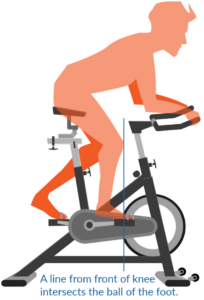Indoor cycling is challenging but shouldn’t be painful. When proper form is used, indoor cycling offers participants uniquely low-impact and comfortable movements especially when compared to alternatives such as running. With that said, soreness and irritation may be experienced by new and even seasoned riders. At Everybody Cycle, we encourage all riders to first and foremost listen to their bodies. If signs from your body like discomfort are ignored, there is a greater potential for future injury.
At Everybody Cycle, we are here to facilitate your ride comfort. Below is a list of common discomforts and recommended remedies for each. We don’t expect you to read this guide from start to finish, rather we hope you use it as a reference document to explore if you are experiencing discomfort. We also invite you to ask your instructor if you have any questions. Note that this is not medical advice, please consult with your personal physician to evaluate persistent pain and determine your ability to participate.
—
Table of Contents (click to jump to each section)
All Discomforts
Soreness In Areas That Rests On Bike Seat (Saddle Soreness)
Soreness In Lower Back
Soreness In Knees
—
For All Discomforts
Proper bike setup may be a full or partial remedy for any discomfort. Therefore, our first recommendation is to ensure the bike is properly fit to your body. Please review these bike setup instructions and talk with your instructor before class if you have any questions or need assistance.
Soreness In Areas That Rests On Bike Seat (Saddle Soreness)
This is the most common type of soreness that new riders experience. The soreness may be experienced in the sit-bones, perineum (area between your thighs), and/or thighs. This soreness is caused by a combination of pressure, sweat, and friction.
To prevent or reduce saddle soreness, you can take the following actions.
- As always ensure the bike is fit to your body
- Wear cycling shorts, briefs, or legging to reduce friction and moisture between the thighs. Avoid wearing cotton underwear and shorts which are more likely to hold moisture that causes irritation. An added benefit of investing in cycling shorts is they often have built-in pads that make the ride more comfortable. You can explore cycling shorts options here.
- Apply Chamois Cream to your perineum, inner thighs, and genital area before riding to reduce irritation and chafing. This cream might initially feel a little strange, but it is very effective at preventing saddle soreness. Here is the brand we recommend.
- Clean your cycling attire (shorts, underwear, socks, shirts, etc.) between each ride. Never wear the same clothes for multiple rides as this increases the likelihood of saddle soreness. Also, shower/wash your body as soon as possible after riding. When bathing make sure to specifically wash and rinse the parts of your body that touch the bike seat.
- Work up to it. Everybody should take each ride at their own pace. Always listen to your body and pay attention to soreness, irritation, and pain. If a movement in a ride is causing discomfort, modify that action (for example pedaling at a slower pace). If you are not sure how to modify, don’t hesitate to ask an instructor.
Soreness In Lower Back
Soreness or pain in the lower back is sometimes experienced by riders. Often times lower back pain can be eliminated or reduced by fitting the bike to your body and engaging the muscles that support your lower back. Below are specific recommendations.
- As always ensure the bike is fit to your body. Specifically, you want the bike to be set up in a manner that allows you to maintain a neutral spine. The setup should enable you to hinge from your hips without flexing the spine or reaching for handlebars. To enable a neutral spine, we recommend that the handlebar height be higher than the height of the seat and that you adjust the handlebars forwards or backwards to avoid reaching.
- Engage core. The core muscles (primarily the abdomen and obliques) can be engaged to distribute the tension and work being placed on the lower back. Riders in the moment of a challenging ride may make the unconscious oversight of allowing the lower back to do all the heavy lifting and work. This is sometimes called “unloading” into the lower back. To remedy this overwork, you can consciously engage your core while riding. To consciously engage your core, imagine that you are pulling your bellybutton to the center of your lower back. This pulling-in of the bellybutton engages the core muscles and supports the lower back.
- Engage glutes. Just like the core muscles, the glute muscles in the buttocks can be engaged to distribute the tension and work being placed on the lower back. To help remedy this stress on the lower back, you can consciously engage your glutes while riding. To consciously engage your glutes, imagine you are flexing your glute muscles to hold a marble between your buttocks.
- Work up to it. Everybody should take each ride at their own pace. Always listen to your body and pay attention to soreness, irritation, and pain. If a movement in a ride is causing discomfort, modify that action (for example pedaling at a slower pace). If you are not sure how to modify, don’t hesitate to ask an instructor.
Soreness or pain in the knees can be experienced by riders from time to time. This discomfort is typically felt below the the kneecap on the right knee, left knee, or both knees. This pain could be sharp or dull. Regardless of how the discomfort in the knees emerges below are steps to address it.
- Work up to it. Everybody should take each ride at their own pace. Always listen to your body and pay attention to soreness, irritation, and pain. If a movement in a ride is causing discomfort, modify that action (for example pedaling at a slower pace). If you are not sure how to modify, don’t hesitate to ask an instructor.
- Keep knees behind the blue resistance knob when standing up and pedaling. Imagine an invisible wall perpendicular to the bike at the blue resistance knob. When standing and pedaling try to keep your knees behind this invisible wall. If you find your knees crossing this invisible wall try shifting back your hips (your hips should be hovering over the saddle as you stand and pedal). This shifting back of the hips should pull your knees further back and improve comfort.
- Avoid flaring out your knees as you pedal both in and out of the saddle. When you look down, your legs should be parallel to the bike at all times. If you are flaring out your knees, as you look down your legs will point out from the bike.
- As always ensure the bike is fit to your body. Specifically, you want the knee to not pass beyond the ball of your foot when pedaling in the seat. To determine the correct bike set up, sit in the saddle with your feet in the pedals and equidistant from the ground (3 o’clock and 9 o’clock). If the bike setup is correct, your forward knee should be over the ball of your forward foot. If your knee is over your toe or further forward move your seat back. If your knee is over your heel or further back move the seat forward. Continue to adjust and test until your forward knee is above the ball of your foot when in the feet equidistant from the ground (3 o’clock and 9 o’clock) position (see image below).






